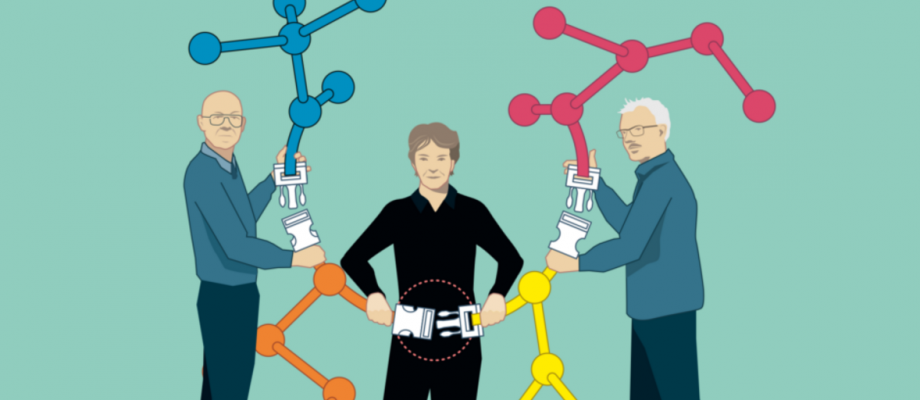NOBEL 2022. Over the years, this year’s winners of the Nobel Prize in Chemistry have clicked well with scientists and research at the University of Gothenburg. Here, the laureates and their advances are warmly acclaimed, and an odd habit one of them has is revealed.
This year’s Nobel Prize in Chemistry is about simplifying intricate processes. Chemists have long been driven by the aim of building ever more complicated molecules, in pharmaceutical research, for example. But these molecular structures have generally been time-consuming and very costly to produce.
The basis for “click chemistry,” which has now come to the fore, was laid by Barry Sharpless and Morten Meldal. The third laureate, Carolyn Bertozzi, took click chemistry to a new dimension, applying it inside living organisms. In simple terms, click chemistry is about molecular building blocks that snap together rapidly and effectively.
Click chemistry tried and tested at GU

Malin Johansson, an associate professor in medical and physiological chemistry at the University of Gothenburg, has worked extensively with these methods. She emphasizes the value of being able to label molecules with click reactions in living cells or organisms.
“These are pioneering methods. They can be used to detect disease-related changes, trace the course of a disease and treat the area affected by targeting it specifically. The method is based on sugar structures usually being present, attached to various molecules in the biological system, like cells in animals and humans. It enhances our understanding of their functions, which are a field of research that hasn’t been thoroughly well studied yet,” she says.
Johansson heads a research group that works closely with that of Gunnar C. Hansson, professor of medical and physiological chemistry at the University of Gothenburg. Their focus is on mucus, the slimy substance that protects the intestines and airways from infection.
Prompt congratulations to his friend
Gunnar C. Hansson is both a colleague and a friend to Carolyn Bertozzi, who works at Stanford University in the U.S. He was quick to congratulate her after the announcement.
“When I wrote and congratulated her, she described herself as ‘stunned.’ She said she was looking forward to coming here for the celebration, but also for scientific discussions with us. So now we’re looking forward to Carolyn’s visit to Sweden and Gothenburg, and the time we’ll get to discuss our joint scientific interests,” Hansson says.
“It’s a fine award choice that includes methods that are going to be useful in a lot of areas. In medical research, Carolyn Bertozzi’s discovery has already been a great boon to us. We’ve learned that the protective mucus layer that keeps bacteria at bay in the large intestine, just a few tenths of a millimeter thick, renews itself within an hour — an incredible lot faster than we could have imagined.”
A time to remember with Morten in Copenhagen
Morten Grötli is a professor of medicinal chemistry at the University of Gothenburg. He also emphasizes the importance of the discoveries being singled out for the Nobel Prize, and how deserving the trio are who are to receive the illustrious award.
“Click chemistry has proved to have many applications — in development of new drugs and for conjugation (transfer) of fluorescent molecules to proteins and nucleic acids, for instance,” he says.
Grötli spent the years 1997–2000 as a postdoctoral fellow with Morten Meldal at the University of Copenhagen. It was a memorable time in several respects, Grötli says. Like many artists, Meldal the chemist seems to have been inspired by a Japanese color scheme.
“Morten wanted us to do things in particular ways. For instance, all the PowerPoint slides were supposed to be formatted Japanese-style — the colors were limited to different shades of pink and neon green. Otherwise, it was a high-flying group and there was great academic freedom. I remember those days as inspiring,” Grötli says.
BY: MARGARETA GUSTAFSSON KUBISTA











